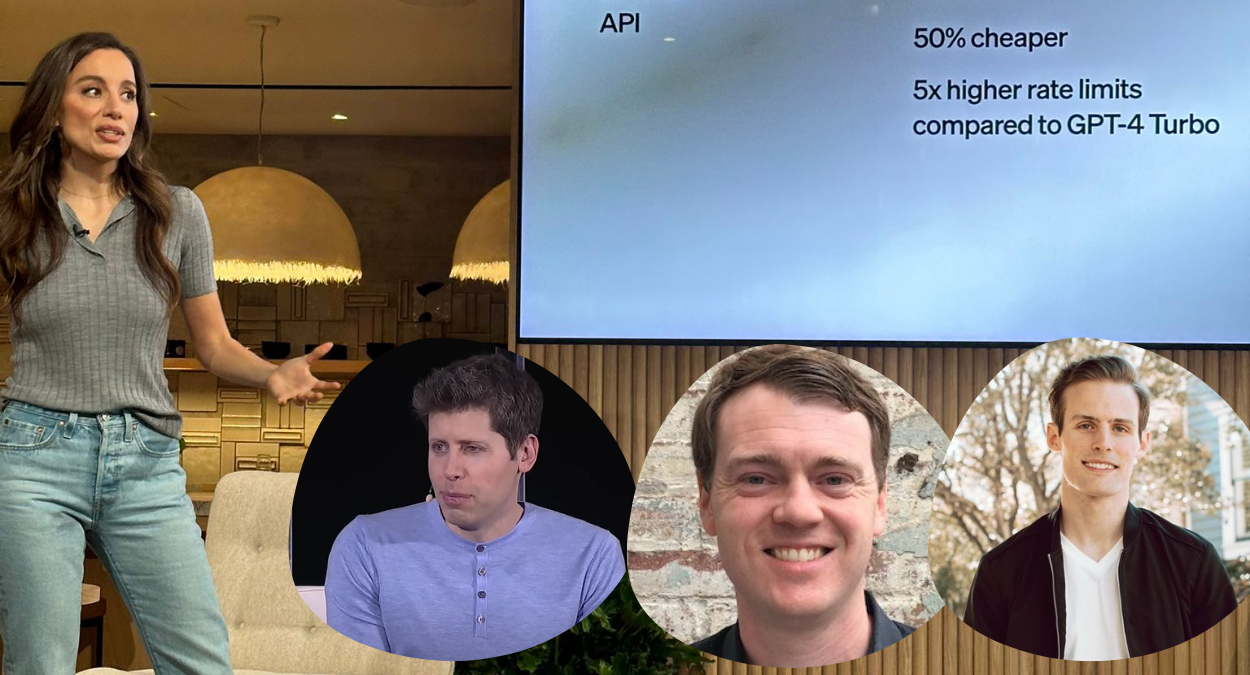The news that Mira Murati resigned spread like wildfire in technical circles and all over the world when she recently resigned from her role as OpenAI’s Chief Technology Officer after six and a half years with the company. She cited a desire to create space for new opportunities and exploration as her primary reason for stepping down. However, her departure comes at a time of significant leadership changes within OpenAI, following last year’s brief removal and reinstatement of CEO Sam Altman. Several other key figures, such as Ilya Sutskever and Jan Leike, have also left the company recently.
Murati expressed gratitude to her colleagues, including Sam Altman and Greg Brockman, and highlighted her excitement about OpenAI’s recent advancements. However, she felt it
Mira Murati posted a statement on X mentioning about her difficult decision to leave the OpenAI. She said, “I’m stepping away because I want to create the time and space to do my own exploration. For now, my primary focus is doing everything in my power to ensure a smooth transition, maintaining the momentum we’ve built.”
She further writes, “I will forever be grateful for the opportunity to build and work alongside this remarkable team. Together, we’ve pushed the boundaries of scientific understanding in our quest to improve human well-being. While I may no longer be in the trenches with you, I will still be rooting for you all. With deep gratitude for the friendships forged, the triumphs achieved, and most importantly, the challenges overcome together.”
Sam Altman, CEO of OpenAI, reacted to Mira Murati’s resignation with deep gratitude and admiration. In a public post on X (formerly Twitter), he expressed how hard it was to overstate Murati’s contributions to the company, both to its mission and to the team on a personal level. He highlighted her leadership during challenging times, including when she served as interim CEO during his brief ousting in 2023. Altman thanked her for helping guide the company through turbulent periods and celebrated the recent technological advancements achieved under her leadership.
He also mentioned that OpenAI would share more details about the transition soon and assured that Murati’s departure was amicable
About Mira Murati
Mira Murati is a prominent figure in the field of artificial intelligence (AI). She is best known as the Chief Technology Officer (CTO) of OpenAI, the organization behind the development of GPT models. Murati has been instrumental in guiding the technical vision of OpenAI and advancing its AI research, particularly in ensuring the development of AI systems that are safe, useful, and aligned with human values.
Murati often speaks about the ethical implications of AI, emphasizing the importance of regulating AI development to ensure its benefits are widespread and not detrimental to society. Her work combines deep technical knowledge with a focus on responsible AI deployment, making her a key voice in the broader discussions around the future of AI technology.
Who along with Mira Murati resigned from OpenAI?
Bob McGrew: The Chief Research Officer, Bob McGrew, also resigned shortly after Murati. He posted on X his statement sent to OpenAI, “It is time for me to take a break. There is no better capstone to my work here than shipping o1 to the world.”
Barret Zoph: A Vice President of Research, Barret Zoph, left the company around the same time. He also posted, “I am very grateful for all the opportunities OpenAI has given me and all the support I have gotten from OpenAI leadership such as Sam and Greg”
Sam Altman’s departure
Sam Altman, the former CEO of OpenAI, has been at the center of significant developments in the tech industry recently. Following his controversial ousting from OpenAI last year and him being reinstated as CEO after a week when more than 700 employees, which constitutes about 95% of OpenAI’s staff, have expressed their willingness to follow him to Microsoft, where he is expected to spearhead a new AI venture. This mass exodus highlights the strong support Altman has within the organization and the potential impact of his leadership on future AI projects.
OpenAI’s Board Dynamics
The situation surrounding Altman’s departure has led to intense scrutiny of OpenAI’s board. Initially, there was a consensus among board members to resign considering the backlash from employees and the public. However, they have yet to officially step down, which has created a tense atmosphere within the company. This ongoing drama raises questions about the governance of tech companies and the influence of leadership on corporate culture.
Open AI to become for profit organization
OpenAI is shifting towards a for-profit model to secure the massive funding necessary for developing advanced AI technologies, such as Artificial General Intelligence (AGI). This transition allows the organization to attract large investments from tech giants like Microsoft, which has already committed billions to OpenAI. The development of cutting-edge AI models, including ChatGPT and DALL-E, requires substantial capital for research, compute resources, and talent acquisition.
Initially, OpenAI was founded as a non-profit with a mission to ensure that AGI benefits all of humanity. However, the financial demands of scaling AI led the organization to adopt a “capped-profit” model in 2019. This model allows investors to earn returns up to a certain limit (100x their investment), after which any excess profits are redirected to the non-profit branch for the greater good.
Sam Altman has emphasized that the switch to a for-profit arm helps balance financial sustainability with OpenAI’s mission. By generating profit, OpenAI can continue its ambitious research while maintaining a commitment to safety and ethical AI development.
